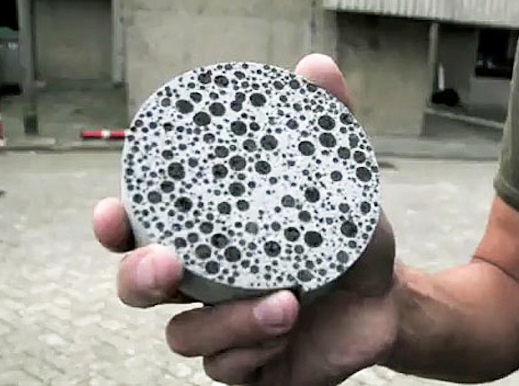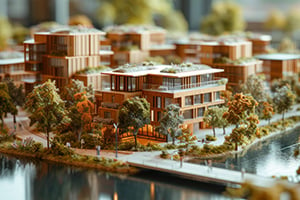
By Tim Peterson
Sustainability Analyst Intern, Sustainable Investment Group (SIG)
When it comes to new and emerging green technologies, Sustainable Investment Group (SIG) tries to stay ahead of the curve whenever possible. Recently, a new type of concrete technology, known as bio-concrete, has received a lot of attention that could potentially revolutionize building construction.
This new technology is the brain child of Dutch microbiologist Henk Jonkers, a professor in the department of Civil Engineering and Geosciences at Delft University in the Netherlands. Jonkers has designed a new concrete mixture that can repair itself as cracking and weathering occurs using extremophile bacteria. These microbes are capable of surviving in extreme environments, such as Jonkers’ bacillus cohnii. Found in super-dry conditions, B. cohnii survive by staying dormant for long periods, only activating when exposed to water. This specific trait is the reason Jonkers chose these bacteria for his experimental building material. By adding biodegradable capsules filled with dormant bacteria and a food source, a spectacular reaction occurs. When an exterior crack appears, water enters the crack, dissolves the pod casing, and awakens the hungry bacteria, which immediately begin consuming the food awaiting them. The primary byproduct of this microscopic feeding frenzy is calcium carbonate, commonly known as limestone. As the bacteria feast, the limestone builds up, effectively sealing the crack from further weathering. This automatic sealing ability will keep the building exterior free of unsightly cracks and exposed rebar, with the aim of significantly decreasing maintenance costs. While this technology has yet to hit the market, its creation is a good omen for an industry in desperate need of innovation on the sustainability front.
According to Oak Ridge National Laboratory’s Carbon Dioxide Information Analysis Center, concrete production accounts for 4.5% of annual worldwide carbon dioxide emissions. The majority of these emissions stem from the cement industry, one of the most critical ingredients in any concrete mixture. When mixed with water, cement hardens and binds the mixture together, making it the defining component of any effective concrete. But cement has a less than ideal production process, emitting 9 kilograms of carbon dioxide for every 10 kilograms of cement. These emissions build up from a variety of sources: from the physical creation process known as calcination, to the powering of machinery for production, to the fleets of vehicles needed to transport this heavy material.
The apparent environmental strain of the concrete industry is what drove the U.S. Green Building Council (USGBC) to push for the use of coal fly ash in concrete mixtures. Fly ash, a byproduct of burning coal, was once a menace to the environment, contributing to acid rain and a plethora of human and environmental health issues. Currently, fly ash is captured by smokestack filters called coal scrubbers mandated by the Clean Air Act, and disposed of in landfills and ash ponds. The fly ash not diverted to these sites can be purchased by concrete suppliers – perfect for building projects looking to earn Leadership in Energy and Environmental Design (LEED) points. In the LEED for New Construction program, an Innovation in Design point can be earned by projects that replace 40% or more of their cement with fly ash (learn more about this credit, here). However, using fly ash instead of cement makes the concrete dry much slower than cement based mixes, extending construction time and hiking up costs.
The crux of the concrete dilemma is this lack of a proper substitute. Concrete is durable, safe, and economical, but carries significant environmental issues. It is for these reasons that USGBC encourages the reuse of buildings as the greenest option within sustainable development, which would only become more feasible if Jonkers’ self-healing concrete becomes a reality in the marketplace. By using building materials that can heal themselves as problems occur, building infrastructures would remain structurally viable for longer periods of time, and maintenance costs would plummet. Metropolitan areas would imitate living organisms, responding to wear and tear like immense concrete skeletons. Until this technology becomes a reality, construction projects must remain aware of the impacts of new construction, prioritizing the use of products and materials containing recycled, reused, sustainable content whenever possible.
© 2015 Sustainable Investment Group (SIG). All Rights Reserved.



